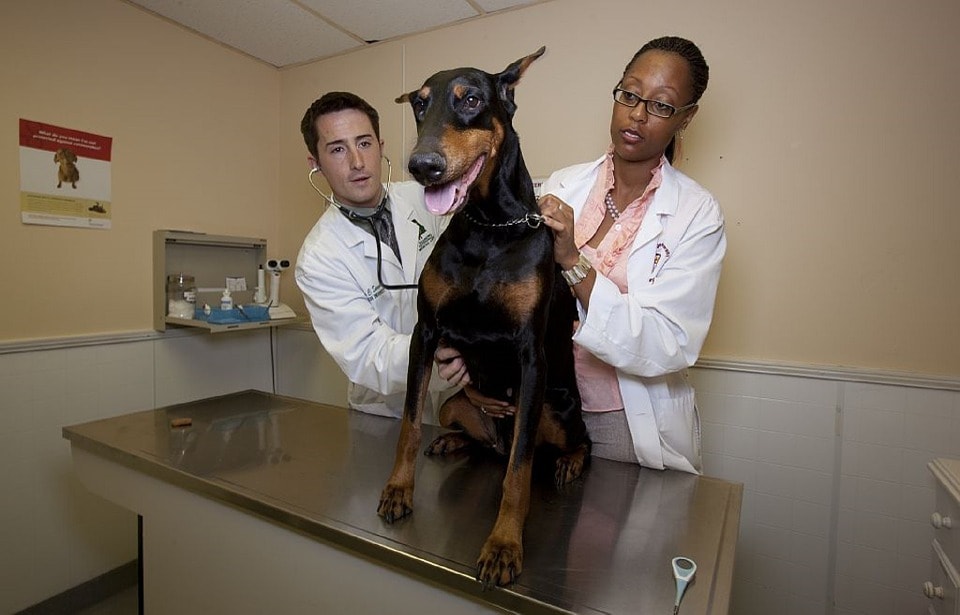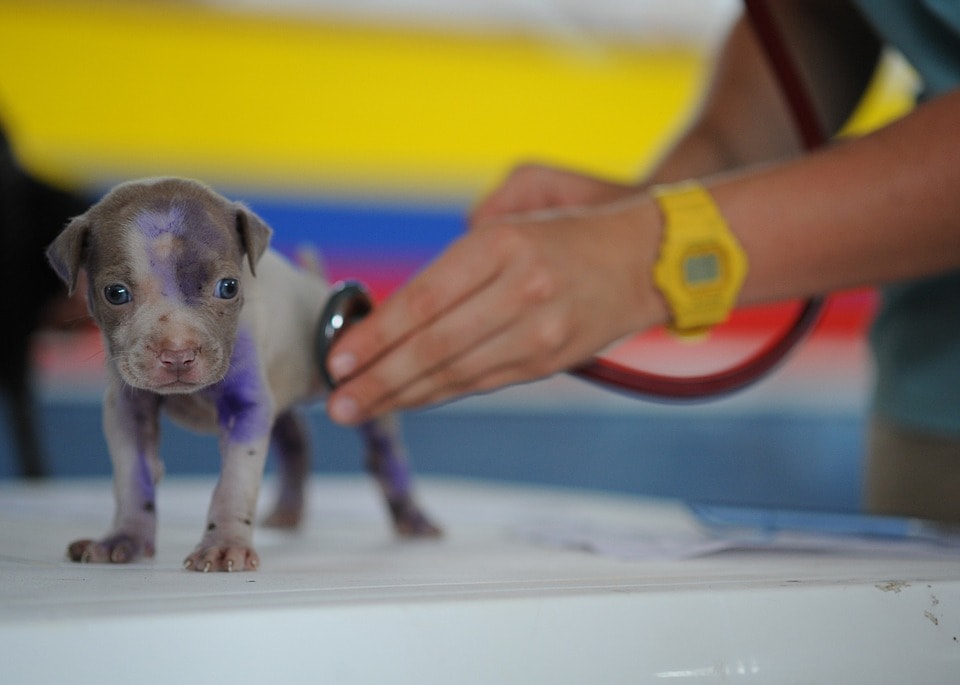
Common Mistakes Pet Owners Make at the Vet
Posted by Megan Schneider on 4th October 2016

As pet owners, we tend to always put our friends first – and
that’s the way it should be! We spend our time and money to make sure our pets
have the best of everything – the newest toy, that special treat, a
more-expensive-than-necessary bed. But one area in which pet owners could
improve is learning how to make trips to the vet stress-free for everyone – for
ourselves, for the vet, and most of all, for our furry friends! Below, see a
few common mistakes pet parents make at the vet and how to fix them.
Problem: The
owner uses a retractable leash.
Sometimes when we bring our dogs to the vet, they get a
little bit anxious. This is a natural reaction. However, as pet owners, we do
not always come prepared for this. You may think you’re doing your dog a favor
by putting him on a retractable leash at the vet and giving him room to roam.
However, retractable leashes can actually cause a lot of problems at the vet.They
encourage pulling and poor pet behavior, and they also pose a threat to other
people and their pets, because if your dog gets excited, he can easily wrap
himself around other pets and their owners, causing a catastrophe. This is
especially common in veterinary waiting rooms, as dogs get excited when they
see other animals. You will want to keep your dog under control, as he may not
get along with other dogs or may end up interacting with a sick animal and
getting himself sick, as well.
Quick Fix: Use a tether leash instead.
These situations can easily be avoided by instead using a
short tether leash on your pet, especially at the vet. Keeping your dog on a 3’
lead will enable you to control him, as well as keep him out of trouble. The Kurgo Quantum Leash is an excellent choice. It has six different configurations,
so you can use the long 6’ lead outside and then shorten up to 3’ while in the
vet office.
Problem: You feel
trapped inside.
Sometimes, we may feel like we have to sit inside and keep
our poor pups cooped up while we wait for the vet to arrive.
Quick Fix: Get
outside!
You are not trapped. Just inform the receptionist where you
will be and take your dog outside. You can go for a short walk around the
property, throw a ball or a toy, or just hang out in the fresh air. This helps to
alleviate any stress the vet may cause. Just remember to take precautions: if
your pup is sick, don’t overdo it.

Problem: The
owner views the waiting room as a “meet and greet” venue.
Although sometimes vet visits are just routine, often times
we bring our pets to the vet because they are sick or their behavior is
abnormal. When you are sick, you don’t want to be around other people. The same
goes for your dog. He isn’t there to play and make friends; he is there to be
treated. Also, other pet owners don’t necessarily want their pets interacting
with your dog, either.
Quick Fix: As a
common courtesy to people and pets alike, keep your dog confined to the area
around you.
As pet owners, we understand our own pets’ needs, but we
don’t always offer the same courtesy to other people’s pets. As a rule of
thumb, make sure you keep your pup leashed and always remain in control when
there are other pets around so as to respect the other pets and their owners.
Problem: You
withhold information from the vet.
It is easy to overlook small bits of information that are seemingly
insignificant to you, like the fact that you feed your dog even just a tiny
piece of your food at dinner every night or he hasn’t been exercising much
lately because you’ve gotten too busy. It isn’t intentional and it isn’t always
harmful, but if your dog is sick and you leave something out, your vet may not
be able to rule out certain conditions and narrow it down to others without
doing all sorts of tests.
Quick Fix: Tell
your vet everything you know about your dog.
Even if it seems unimportant, your vet isn’t going to judge
you for divulging information. We all like to self-diagnose on the Internet and
our doctors don’t judge us for it (at least not to our faces), so why not start
thinking of the possible scenarios that could be wrong with your pet? By
telling your vet everything you know, it will help him or her to more easily
diagnose your dog and get him the treatment he needs.

Problem: You don’t
understand what the vet has said – and you don’t ask what he or she means.
Just like when we’re at the doctor’s office for ourselves,
vets sometimes use terms that we do not understand. If we don’t understand the
problem, we won’t understand the solution. And if we don’t understand the
solution, we won’t follow through.
Quick Fix: Ask
for clarification.
If you don’t understand something, always ask your vet to
explain it in laymen’s terms. Your vet is there to help you help your pet. I
promise, he or she will be happy to explain!
Follow these tips, and your trip to the vet is
sure to be a success! Plus, you will have a very well-behaved dog and people
will ask you how you do it. Don’t worry, you don’t have to cite us as your
source!
Recent posts
Ambassador Highlight: Bordercolliedraco
Draco the Border Collie loves exploring with his dog mom Kristina in Florida. We caught up with these Kurgo Ambassadors and asked them their favorite tips, tricks, and places they'd like to go.
Ask a Vet: Is Alternative Medicine Safe?
We asked veterinarian Dr. Susan O'Dell, "What are your thoughts on small animal vaccinations? Can you over vaccinate?" Read her response below! Vaccinations are an important topic to address for every pet that I see. The diseases for which we vaccinate can cause severe sickness or death in cats and dogs (rabies is also fatal [...]
How Dogs Know to Comfort us
It often seems that our dogs can sense our moods. Have you ever felt upset, and then looked down to find that your dog has run over to you? Recent research has delved into the nature of this bond. Are dogs responding to our feelings, our body language, or something else? Read on to find [...]


